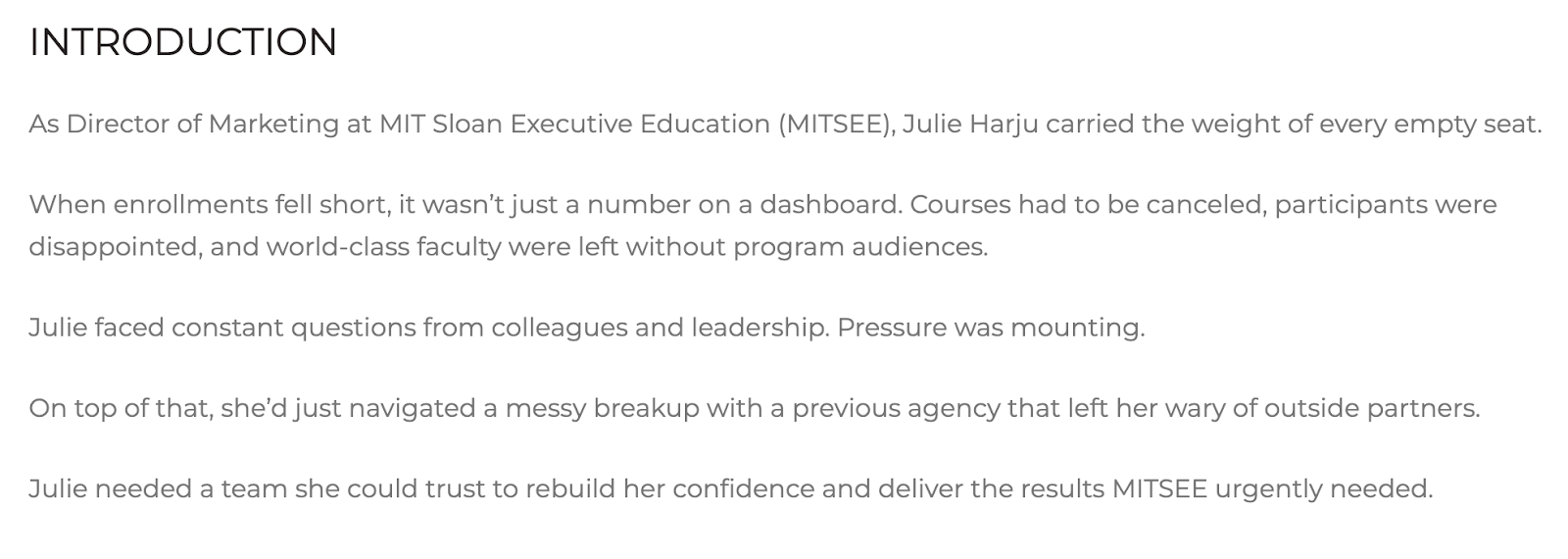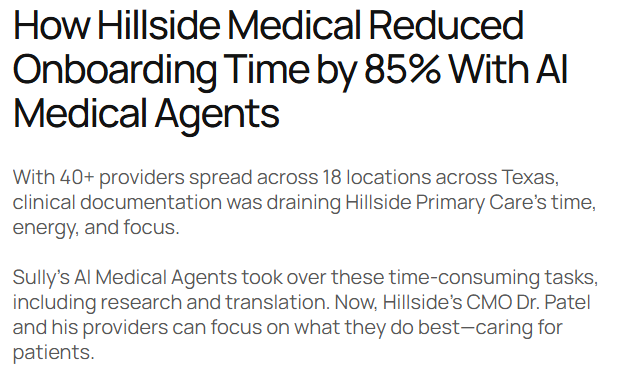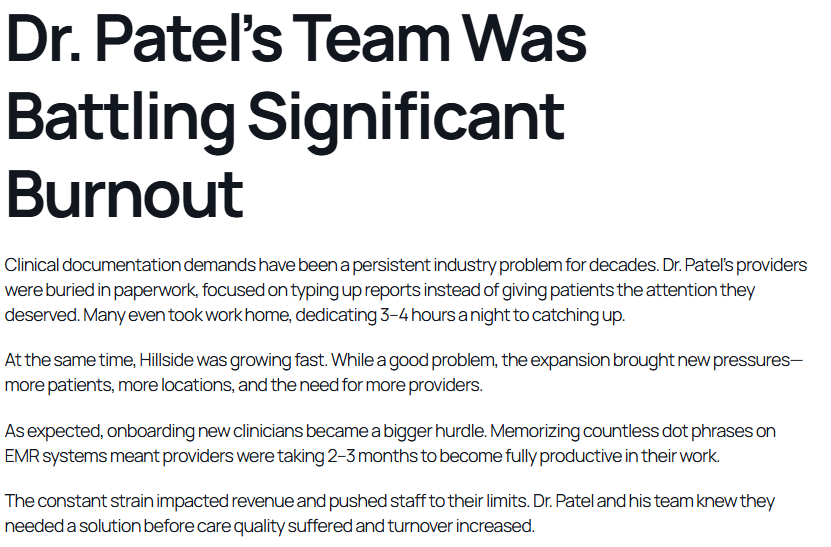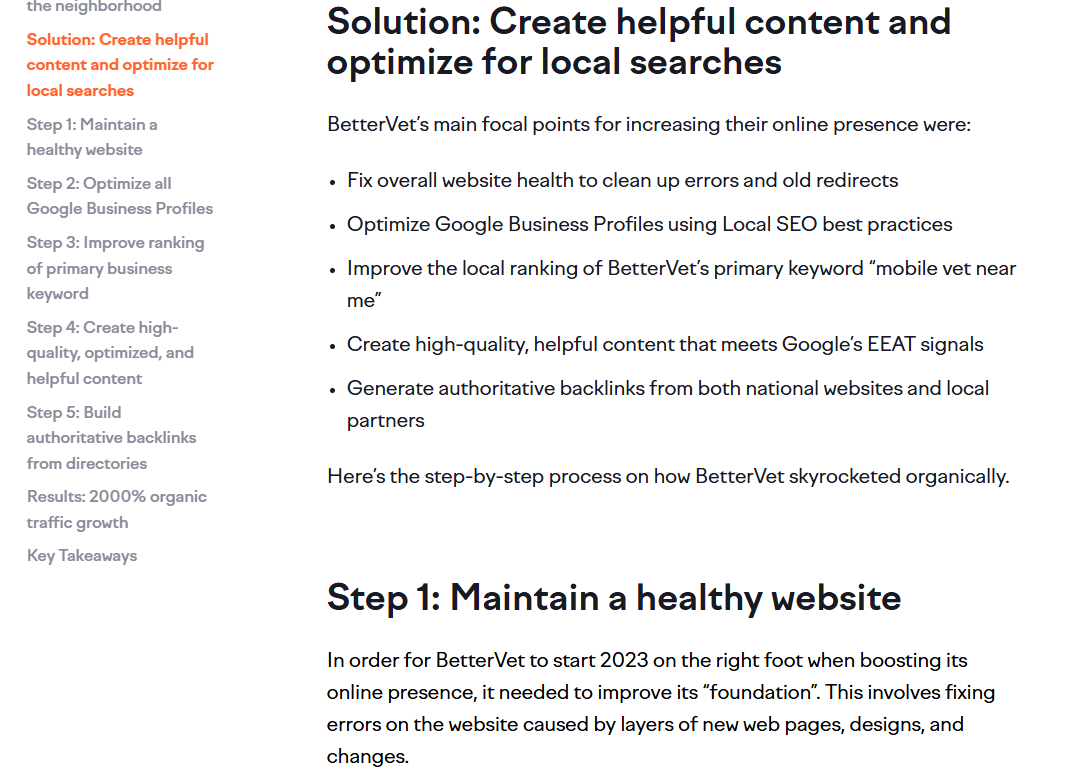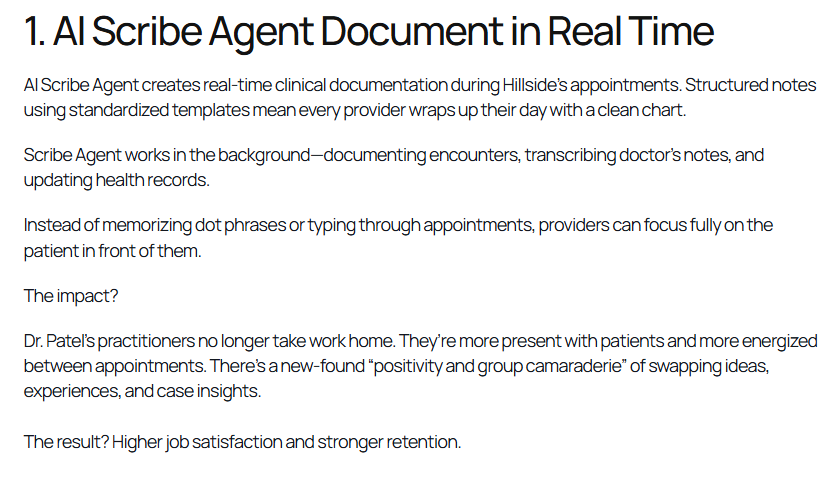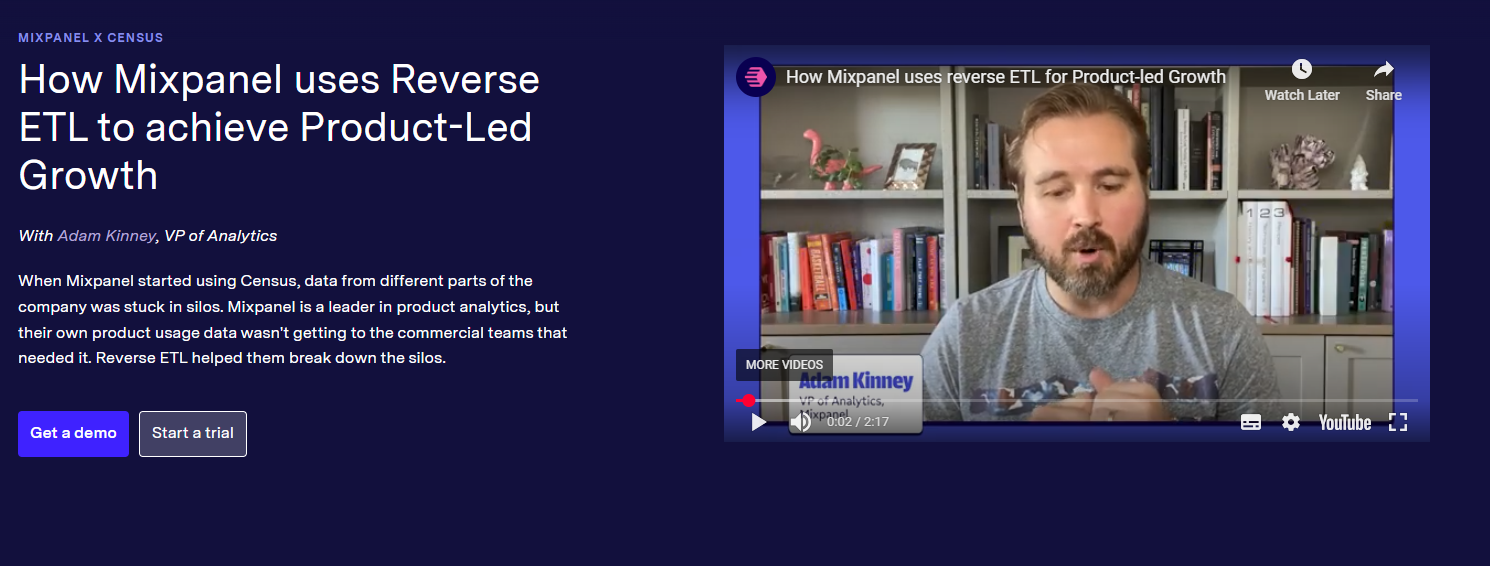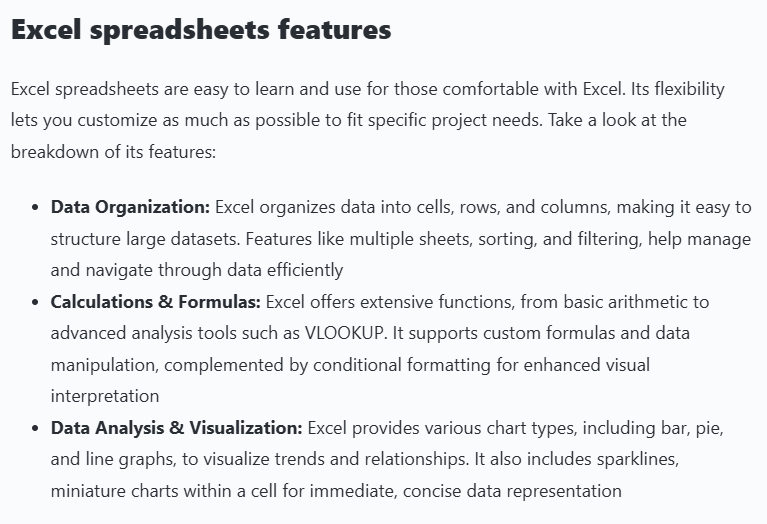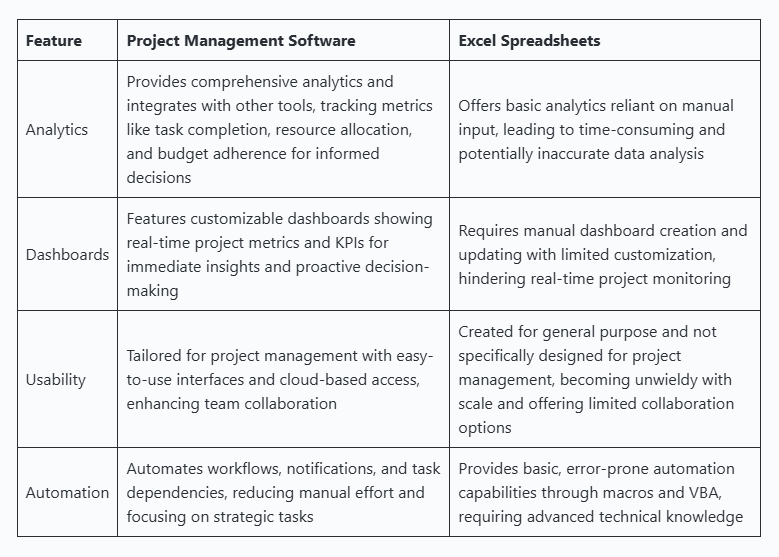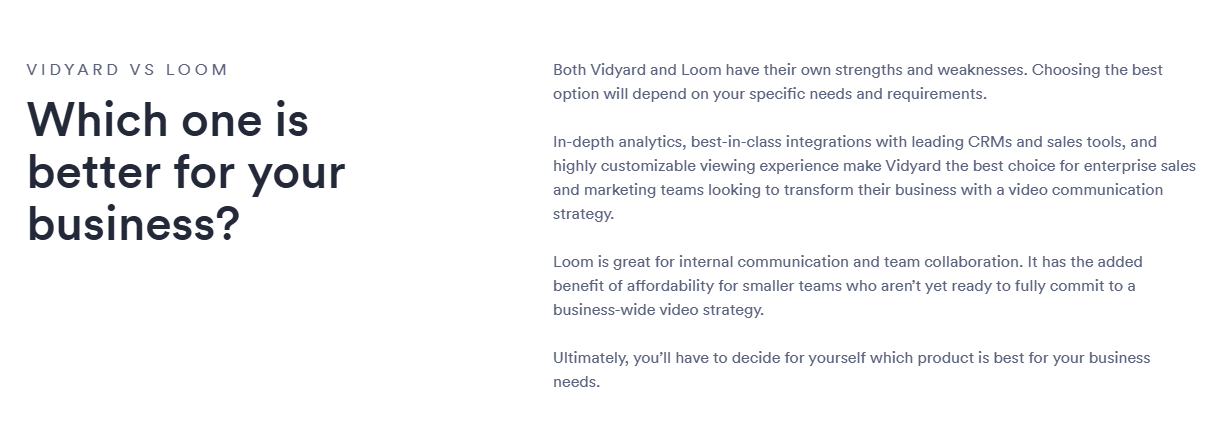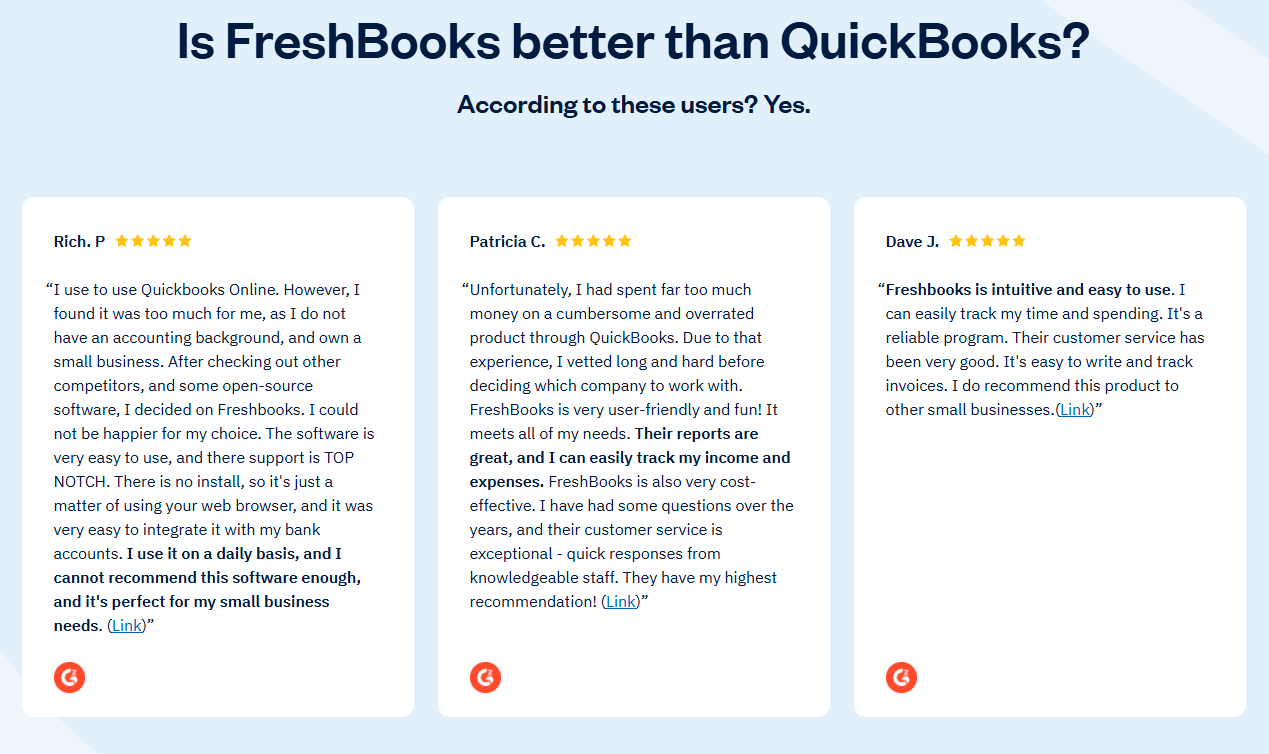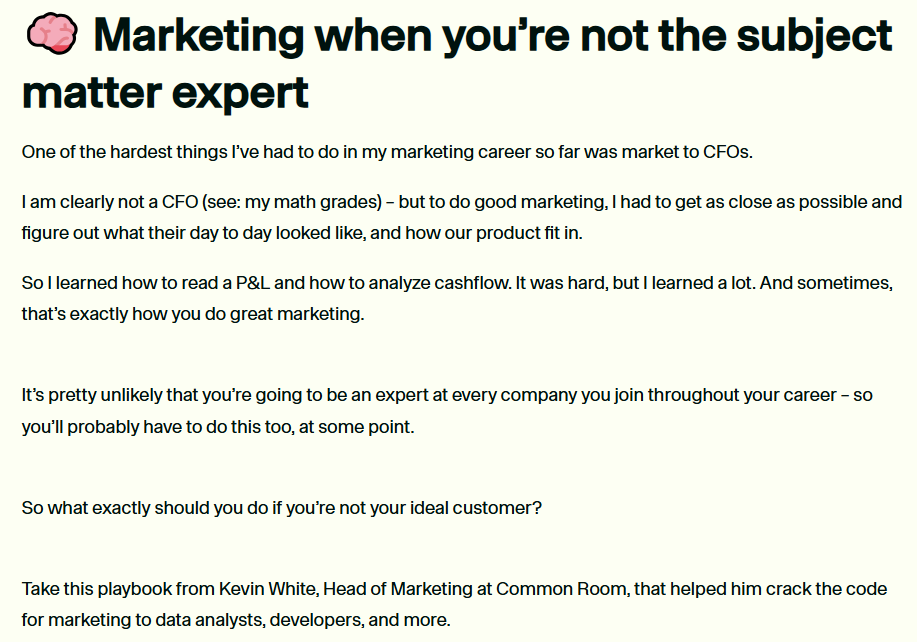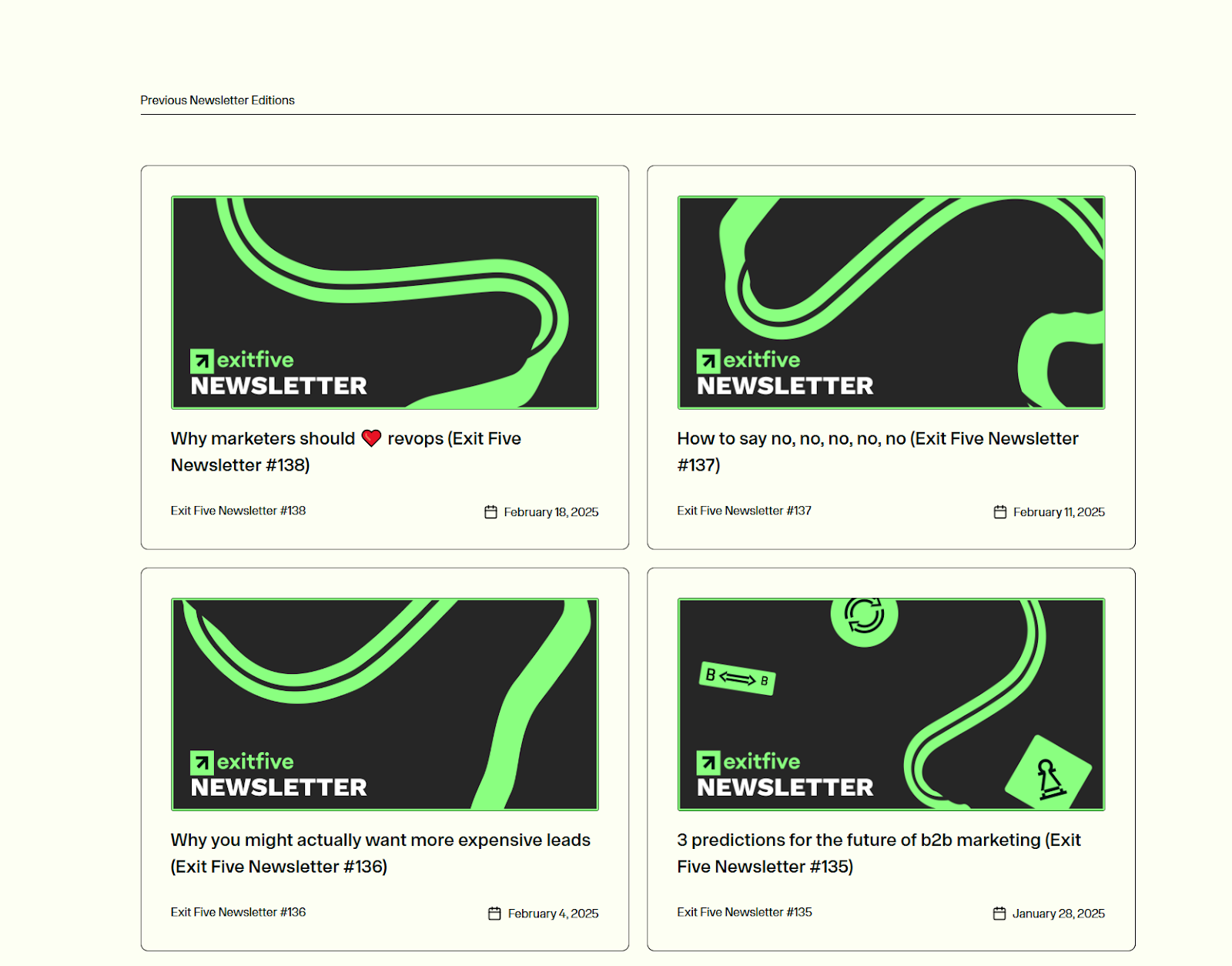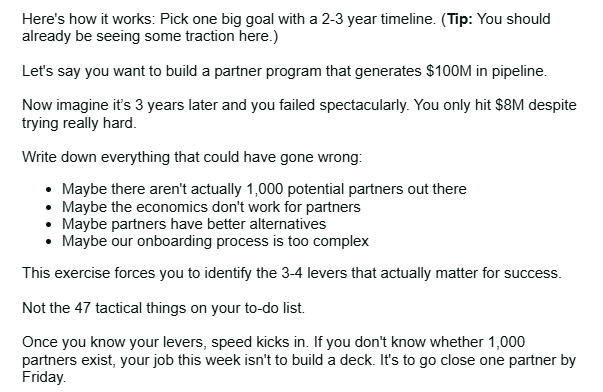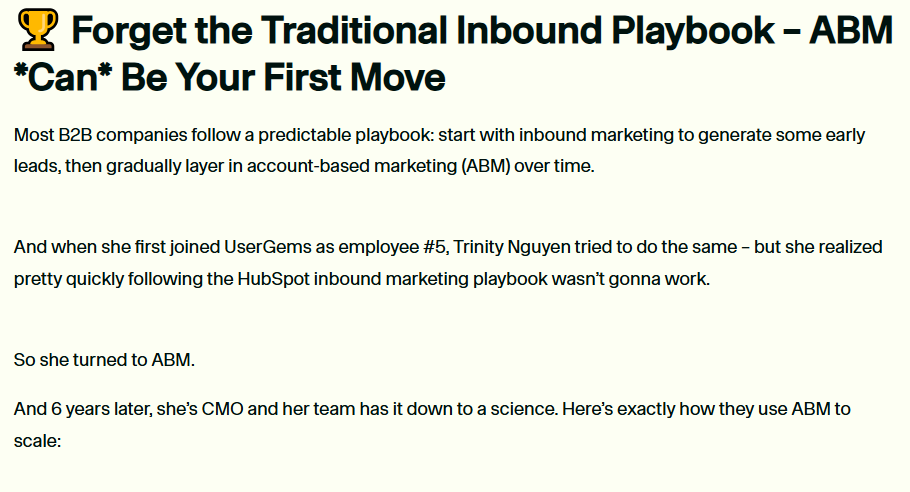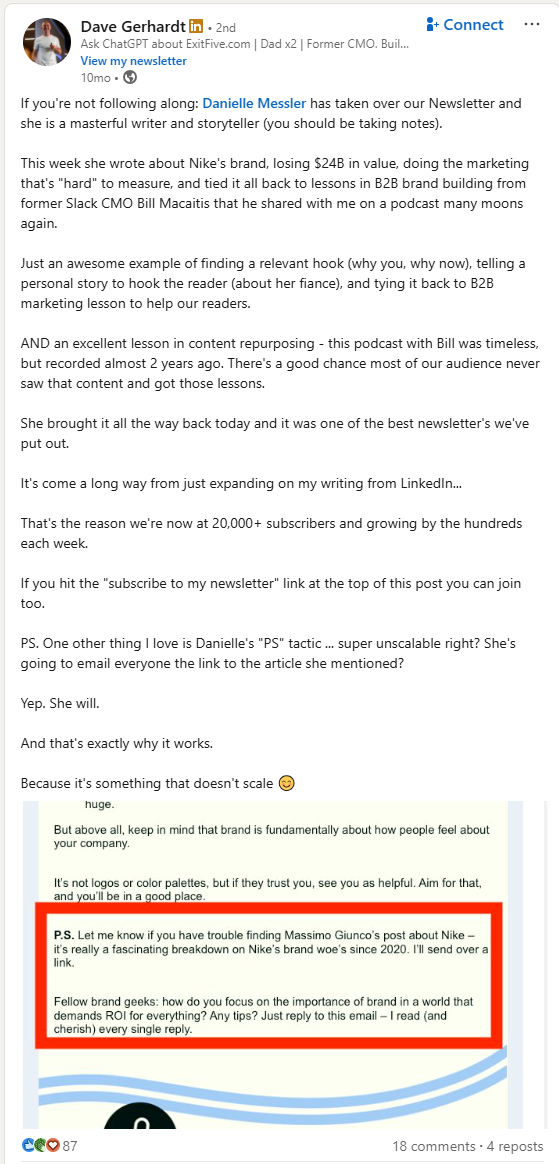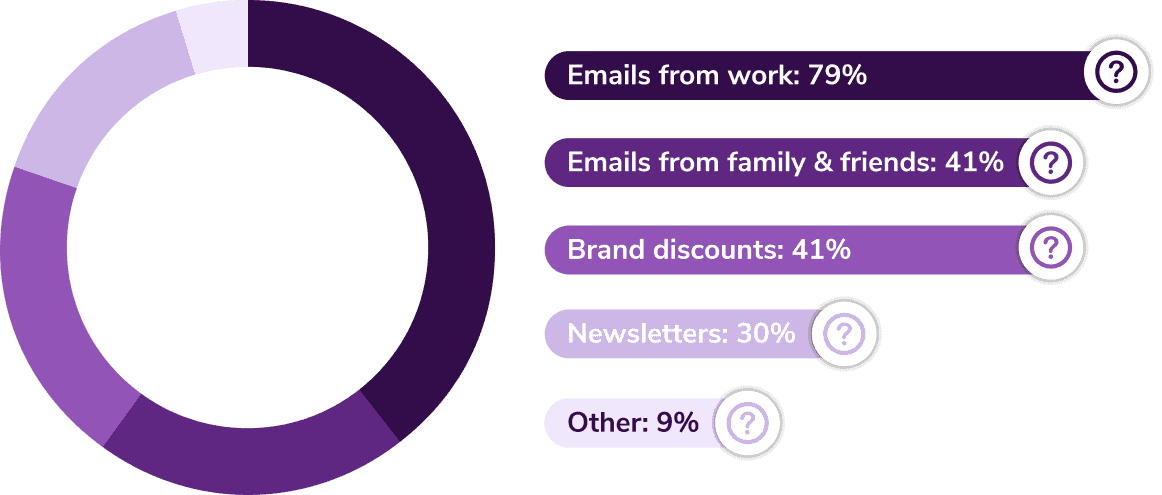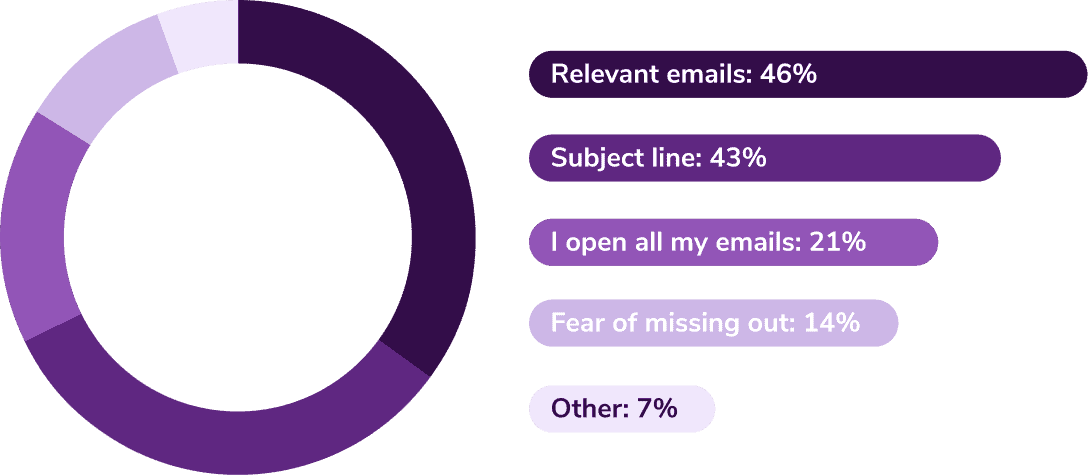SaaS and B2B brands must be more discerning with their content and SEO priorities and choose a strategy that builds authority, generates traffic, and drives revenue.
Competing with powerhouse players becomes a non-issue when you narrow your focus to specific, relevant topics. Casting too wide of a net right away won’t help you form a cohesive narrative, and authority will take longer to build.
To accelerate growth and generate quality search traffic, you need to tell a unified story with your content, one chapter at a time.
The best way to do this is with topical authority. It fuels perceived knowledge, establishes credibility, and positions you as an expert worth paying attention to.
Topical authority is critical for accelerating organic growth
When you build authority around a topic with little competition that aligns closely with your value proposition, you emerge as a voice of authority.
Once you’ve built trust, momentum takes over and people begin to pay attention to everything you publish.
By the time you become a go-to resource on a topic, your audience will acknowledge you as an expert in that space.
Topical authority goes beyond perceived value and trust with people—it also signals to Google that your content is important.
That’s because Google algorithmically prioritizes E-A-T (expertise, authority, trust).
EAT plays a key role in how Google determines search quality. It looks at the creator behind the content and how authoritative and trustworthy that author or brand is.
Google understands that people want complete answers to their questions, from credible and non-scammy sources, so that they can have a satisfying search experience.
Topical authority, therefore, is a strategic play to cater to both algorithmic and psychological preferences. For startups, it’s a far better goal to aim for than domain authority (DA) or domain rating (DR).
If you consistently prove your value, your audience and Google alike will consider you a trustworthy source worth holding in high regard. This has two key ripple effects:
- If your content is useful, helpful, and interesting, people will decide it’s worth reading and Google will decide it’s worth ranking.
- If you consistently produce relevant content on a topic, people will decide it’s credible and Google will decide it has a high level of expertise, authoritativeness, and trustworthiness (and continue to rank it).
As such, topic clusters are the preeminent vehicle to demonstrate knowledge and expertise, accelerate search visibility, and enter the consideration set with your ICP—even in competitive markets.
We followed this strategy with an asynchronous communication SaaS client. Here’s an example of what happens when we publish competitive and commercially-relevant articles on meeting-related topics:

Compare this to another article in the broader “remote working” space:

The meeting-related article ranked on page one within the month. Conversely, the broader remote working article fluctuated between positions 42 and 21 from August until April before stabilizing between positions 9 and 11.
Could we have improved the performance of the broader article? Yes, but that’s not where our priorities lay.
Our goal is to generate relevant traffic and turn SEO into a revenue generating channel, which can only be done by building topical authority in a space aligned with our client’s value proposition. And it works—the blog is responsible for ~33% of new user sign-ups.
Relevant content amplifies the impact of your resources
When you focus on one topic cluster at a time, results compound across all content assets.
For example, say you offer candidate tracking software for hiring managers. You may wish to focus on creating content around the topic cluster “talent acquisition”. This effort will compound the more you publish content within this topic (as demonstrated in the example above).
If you were to produce 12 articles on various HR-related topics, on the other hand, you’d merely dip your toe in each pool, slowing down the speed at which you build topical authority.
Critically, topical authority also helps you gain more quality backlinks. If your brand becomes an industry authority known for sharing quality information, people are more likely to link to your content (more on why and how to do this later).
This is how sites with low DA or DR can rank amongst established players—they’ve reassured Google that the content will meet and exceed search intent.
How to build compounding topical authority using the Hub & Spoke model
The hub & spoke model is how you generate and distribute content around a topic cluster. The hub covers the baseline topic (usually a cluster of high-volume or competitive keywords), while the spokes cover specific topics nested below it (often lower-volume and long tail in nature).
When you strategically organize the relationship between your content, you create structure and cohesion.
To get it right, you’ll need to:
- Conduct keyword research and organize them into clusters
- Meticulously map out how these keyword clusters relate to each other
- Identify the purpose of each article (the traditional funnel is a good model for this)
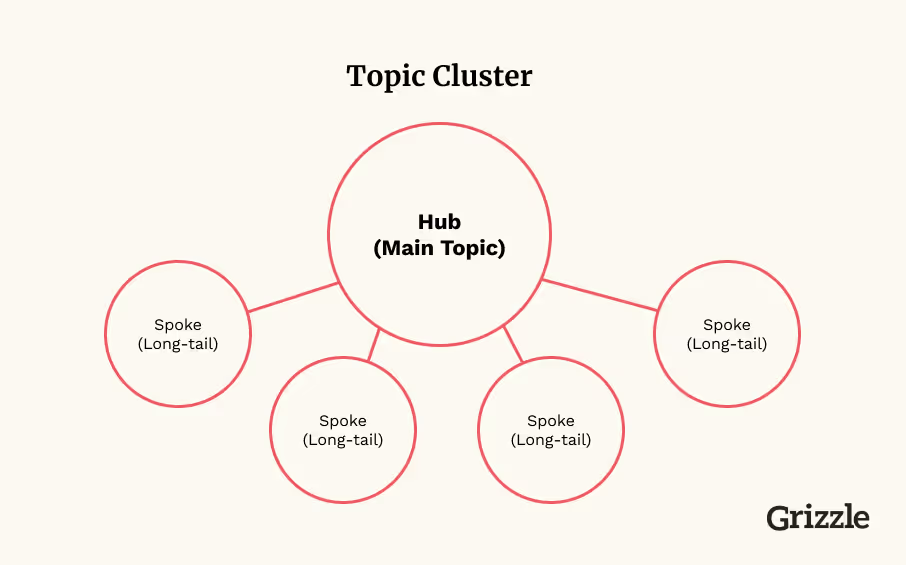
The hub serves as a “home base” while acting as a long-term traffic play. It may take longer to rank, but your chances multiply by covering other areas of the topic.
With keywords in hand, you can get to work.
1. Prioritize topics that align with your solution
Start with your audience’s biggest jobs-to-be-done (JTBD). Provide relevant, helpful, and intriguing content that:
- Presents new and better ways of doing things
- Positions your brand an an authority
- Promotes your solution as the best choice to solve their problems
When you produce comprehensive and topically relevant content, you’ll develop brand equity that drives leads, users, and advocates.
Returning to our candidate tracking software example, we chose the hypothetical “talent acquisition” topic cluster because HR (and even “hiring”) has lots of search opportunities but it’s too broad. You could write about onboarding, company culture, relationship management, etc.—all of which are broad themes of their own.
When it comes down to it, “talent acquisition” would be the primary JTBD for this audience. Candidate tracking software helps buyers improve their talent acquisition workflows and experience.
A “talent acquisition” hub, may cover topics like:
- Candidate experiences
- Interviewing candidates
- Job descriptions
- Talent acquisition workflows
- Applicant tracking systems
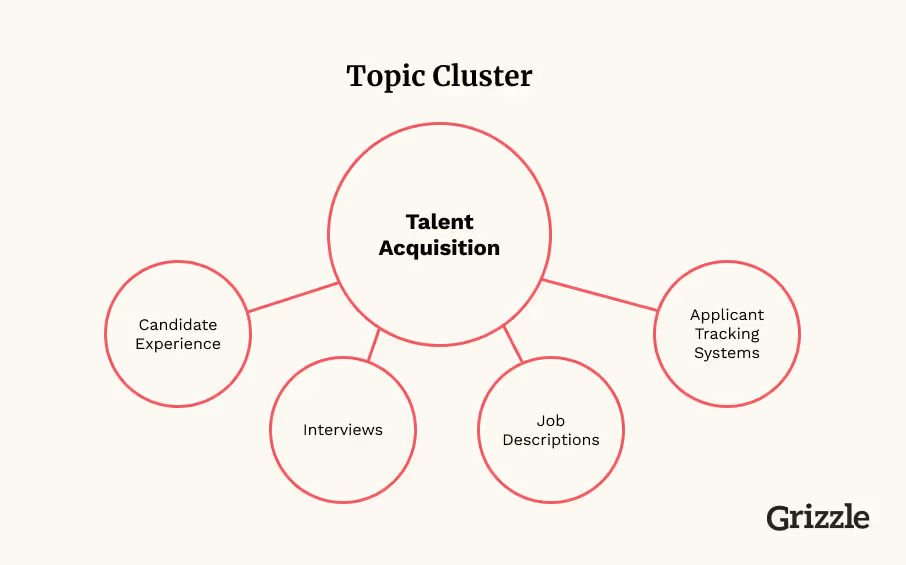
These subtopics align with their product because it directly relates to improving hiring workflows. It also gives them an opportunity to plug their product by showcasing exactly how to use it to build efficiency into the acquisition and interviewing process.
In all, the reader is taken through a helpful journey that motivates them to take action. That could be to read another topic in the cluster, subscribe to a newsletter, or even sign up for a free account (if you’re growing a product-led brand). Topics lower down the funnel might offer demos, consultations, or free trials.
2. Map your topic clusters
By this point, you’ll have various topics that tie to your customer’s goals and pain points. Next, identify which topics belong together in their respective cluster and which will act as the hub.
For example, if you’ve identified various topics around VAT, we can verify that VAT is the hub while specific topics and long-tail keywords like “How much is VAT?” are the spokes.
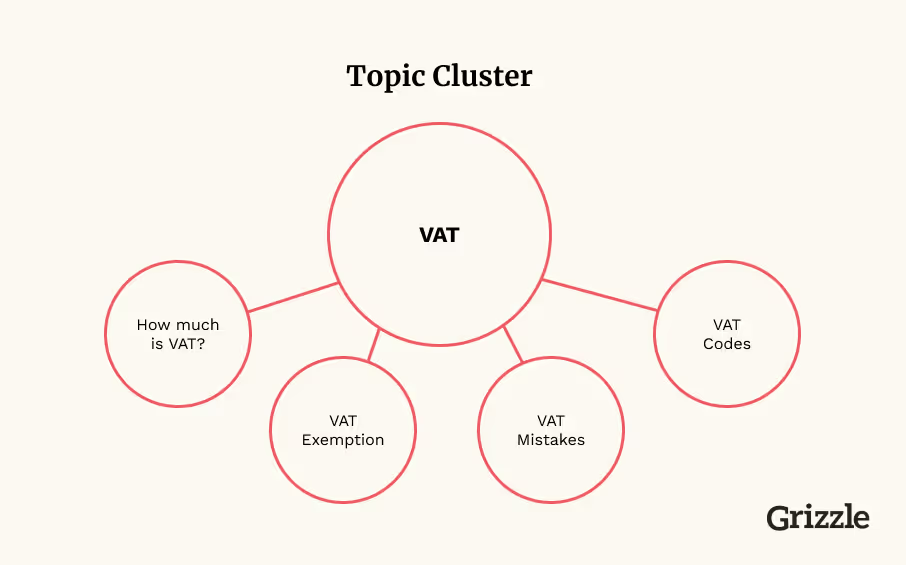
Use keyword clusters to group topics together. This is where queries are “batched” based on search intent and patterns in the SERPs. Tools like Keyword Insights can make this process easier.
For example, if we search for “omnichannel marketing” and “omnichannel marketing examples,” we get the similar results:
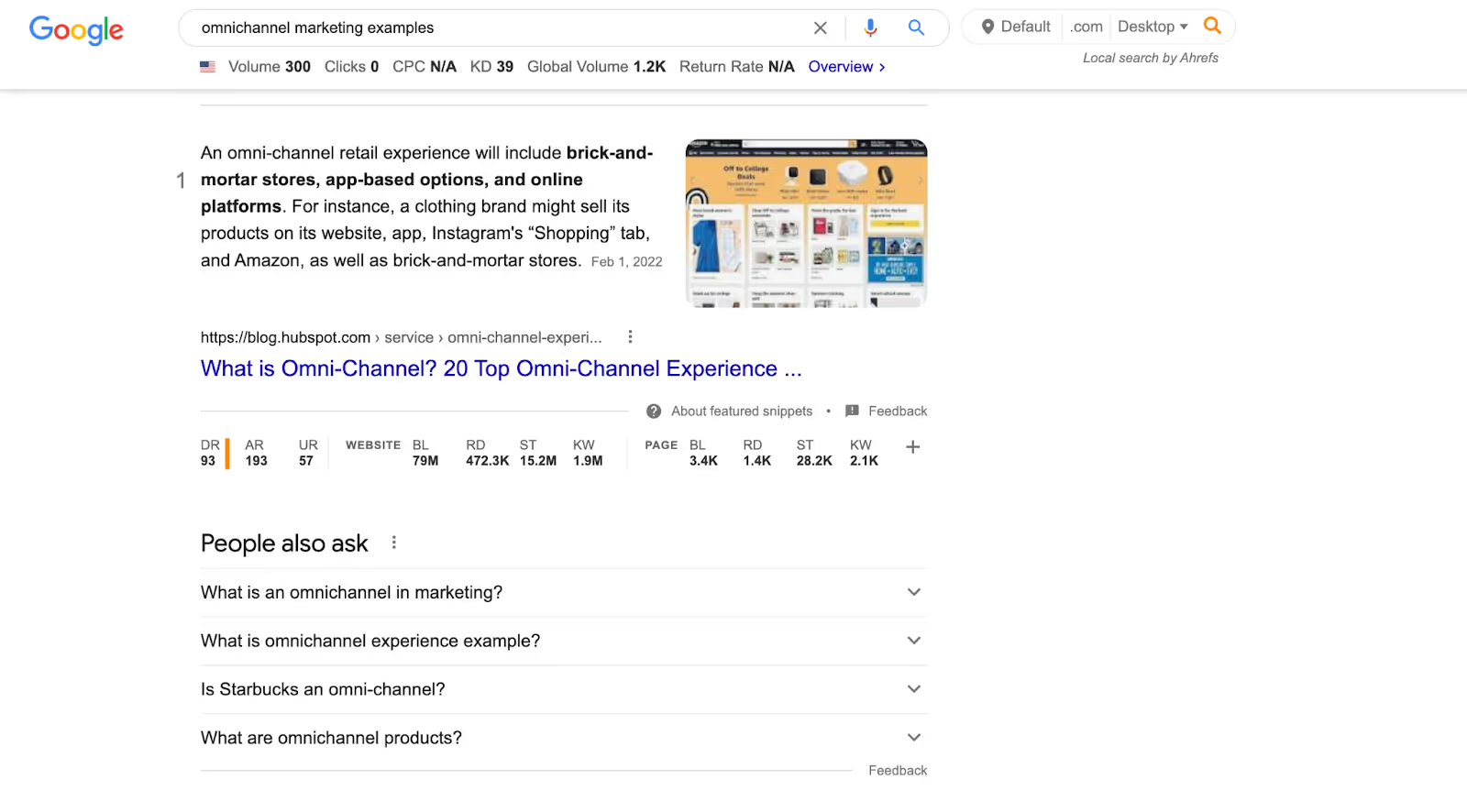
This model will also inform your internal linking strategy. This helps Google determine the relationship between your content and also provides a more helpful (and seamless) experience for readers. It’s also critical for maximizing the impact of your link building, which we’ll cover shortly.
Done right, an article will answer questions fully, but if readers want to learn more, they can click on strategically placed internal links to do a deeper dive.
Within an “Ultimate guide to VAT,” for example, readers can learn more about “How to calculate VAT” by clicking on an internal link or a more prominent “read more” design component.
This removes the need to head back to the SERPs—everything they need is presented to them from a single result.
3. Create content that caters to every stage of the funnel
Your hub & spoke content should touch on every stage of the buyer journey, from awareness to decision.
For example, within the “talent acquisition” hub for our SaaS candidate tracking startup, here’s how we could position spokes throughout the journey:
- Top of funnel: “What is talent acquisition?”
- Middle of funnel: “Best applicant tracking software”
- Bottom of funnel: “Breezy HR alternatives”
The topics move from problem-aware (I need help attracting and recruiting top talent) to solution-aware (I need a tool that helps me manage candidates and improve the hiring experience) to product-aware (evaluating several tools from their consideration set).
We advise creating a balanced content portfolio and steady production cadence across the entire funnel. This will allow you to gain traction on more competitive terms, take advantage of quick-and-easy wins, and generate users and revenue from those middle and bottom of funnel topics.
4. Focus on quality over quantity to signal trust
Bad content ruins a good strategy. You’ll never drive leads and revenue if you can’t provide your audience with helpful, memorable, and unique experiences.
Quality content is critically important—perhaps now more than ever before. According to Semrush’s State of Content Marketing 2022 Global Report, 61% of respondents reported that “making content more authentic” helped their content rank organically.
And Google’s helpful content update also makes it crystal clear that content made for humans, not search engines (and not simply for the means of ranking) will outperform the rest.
Quality content isn’t possible without strong editorial standards, rock-solid workflows, and a team of A-players. Learn how to build the foundation necessary to scale content production.
The trend towards choosing relevancy over top positions in the SERPs is a decade plus in the making.
In 2007, an eye-tracking experiment revealed that people trusted Google’s rank results more than their rational judgment. If it was in position one, it was assumed relevant and click-worthy.
Fast forward ten years: researchers replicated the experiment and discovered people now prioritize relevance over positioning. Eye-tracking results show that positioning still influences consideration, but ultimately people make decisions based on how relevant the content is for the problem they’re looking to solve.
The takeaway is clear as day: a content strategy that prioritizes both what Google and humans want is key to accelerating organic growth.
5. Generate backlinks to accelerate visibility and build credibility
While quality content is critical for generating links, it’s just one piece of the puzzle. You must develop ideas around topics that editors, journalists, and other content marketers want to link to. Data-driven, reactive, or thought leadership content are the best ways to do this for SaaS brands.
When your hub-and-spoke strategy and digital PR campaigns join forces, you can quickly increase your domain authority and pass it on to the rest of your topic cluster:

Here, the data-driven article is what attracts the most links. Intelligent internal linking is used to pass on page authority to the rest of the content hub.
For example, for our candidate applicant tracking example we could run a survey of HR leaders and generate insights like:
- How much time they spend on applicant tracking
- How many stages are in their hiring pipeline
- How much time they spend interviewing applicants
This data can then be packaged up in a report and delivered to journalists as part of a digital PR campaign.
[[component]]
Topical authority is the gift that keeps on giving
Once you build topical authority for your first cluster, your hard work will trickle down to its successors.
The more credible you become, the more likely Google will rank and people will want to click on, share, and link to all of your assets.
This collective vote of confidence will help you ride the wave to increased traffic, leads, and revenue. It all starts by understanding the JTBD of your audience and marrying those insights with keyword clusters to build relevant topic clusters.
Learn how to reverse engineer attention to stand out, run creative digital PR “sprints,” and generate hundreds of links in our guide to why link building processes are broken (and how to fix them).



